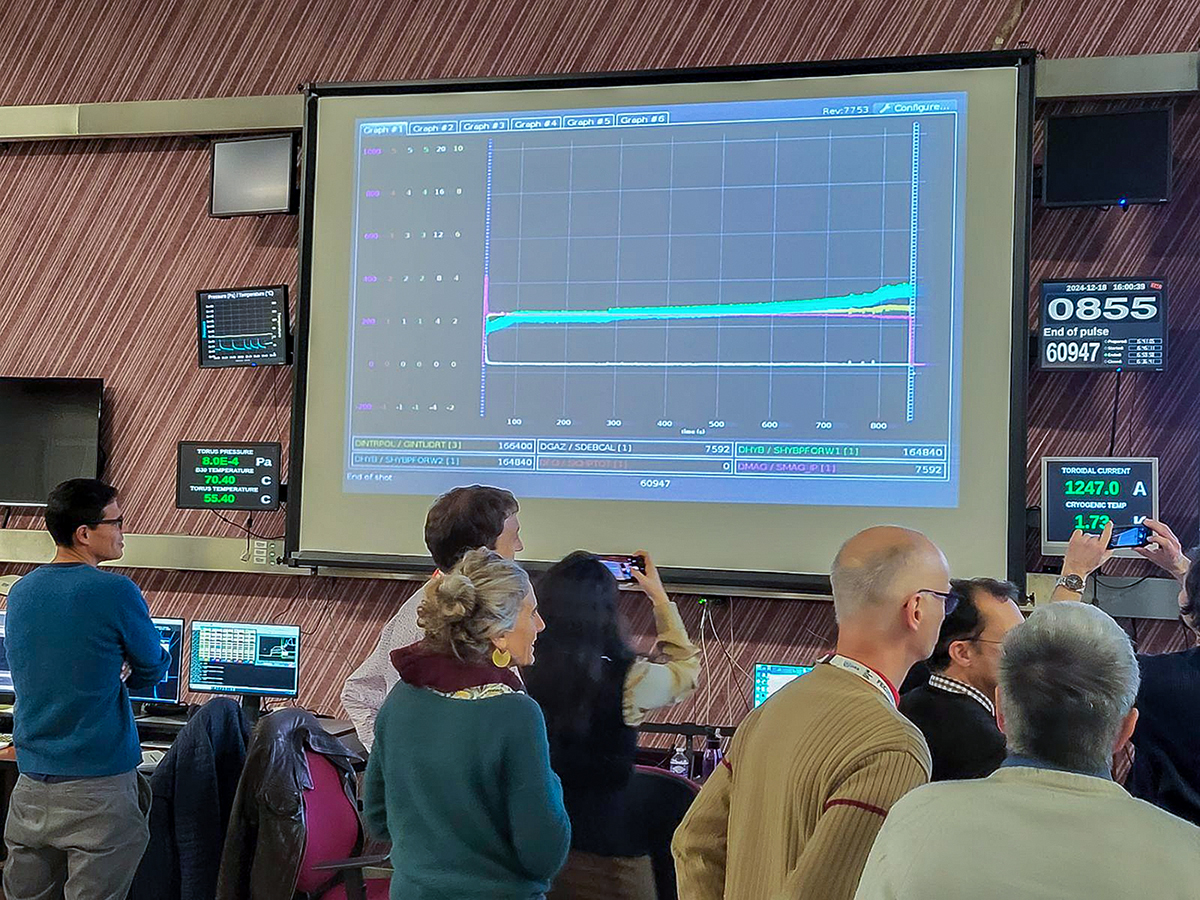At the end of a short but intense experimental campaign, some fine results were achieved, including this new record for plasma duration and injected energy.
After a phase of parameter optimisation and various adjustments spread over several campaigns, the 60947 discharge was maintained for 824s, with a total injected energy of 1.93GJ. This is the record for WEST to date, approximately double in terms of duration and energy injected/extracted compared with the Tore Supra record (in carbon limiter), and at the same level as that of the Chinese tokamak EAST. In these shocks on WEST, the plasma current is generated non-inductively, mainly by the LHCD (Low Hybrid Current Drive) heating system and a small fraction of self-generated current (bootstrap). The addition of ECRH power from 2025 should further enhance plasma performance in future campaigns.
This experimental campaign produced other excellent results.
It began with the aim of studying plasma start-ups by pressing on the internal limiter following the installation of new solid tungsten tiles. These experiments are of particular interest to ITER and are part of the EUROfusion programme. The first part of this start-up consisted of producing ohmic plasmas without boronisation. Significant progress in plasma duration (up to 1.5 s) and plasma current (up to 600 kA) was observed over the course of the sessions, without however reaching stable ohmic plateaus with density control. Following a non-uniform boronisation (3/6 injection points), very good conditions for plasma scenarios were obtained (reduction in light impurities, in particular oxygen) and made it possible to obtain stable density and current plateaus.
From 10 to 12 December, a magnetic configuration with a high negative WEST triangularity was tested (also in the EUROfusion programme). This particular form of plasma has some interesting properties. The overall confinement is similar to that of an H-mode, without the disadvantages of edge relaxations (ELMs).To achieve this new configuration, a negative current had to flow through the top divertor coil, and it was therefore necessary to “connect” the power supply to it in reverse. To prepare for the new scenario, the WEST flight simulator was used extensively. In three days of experimental sessions, it was possible to develop a complete scenario with heating and to start exploring this new operational area.
These results were made possible by the close involvement of the WEST team, the IRFM and partner laboratories.



